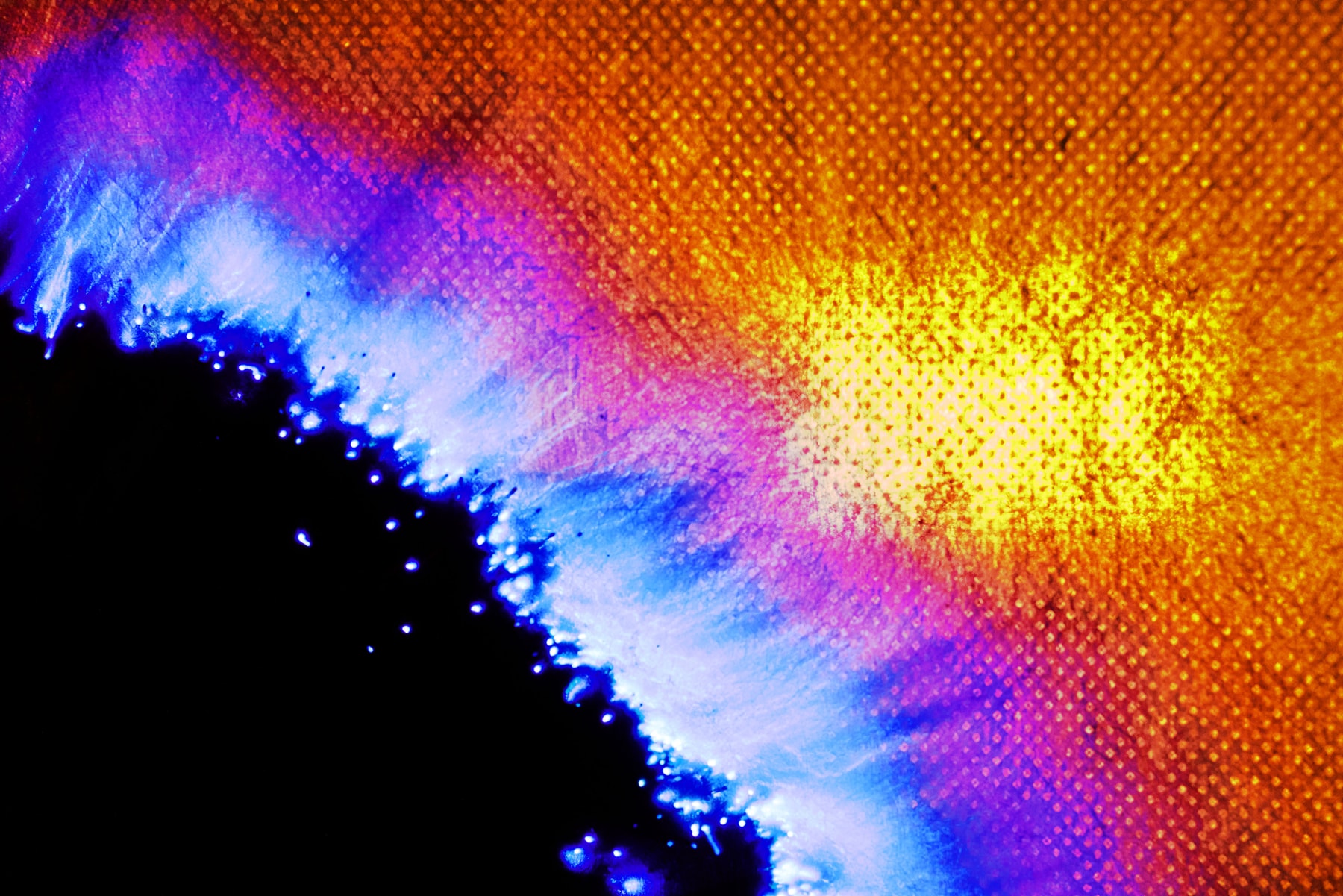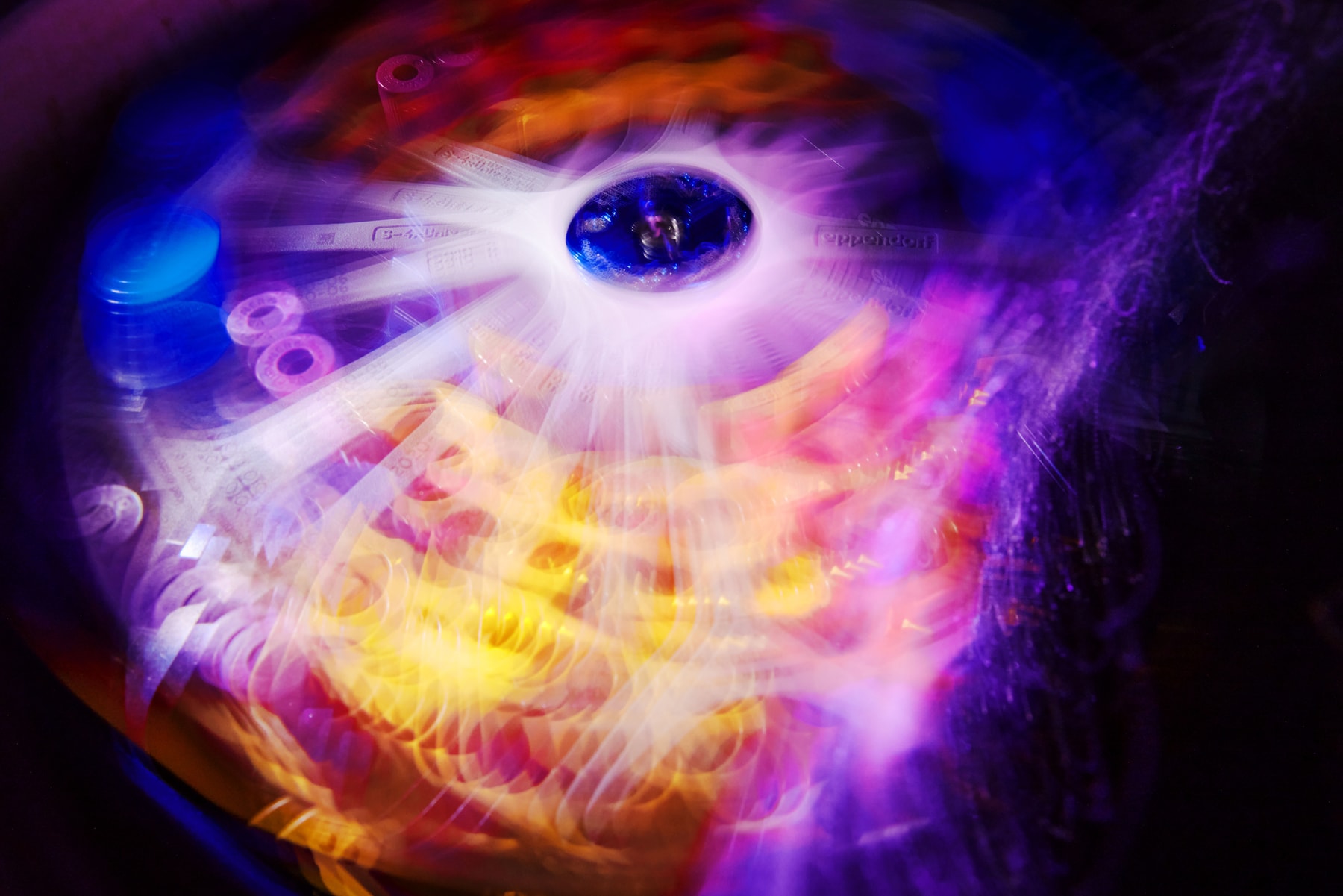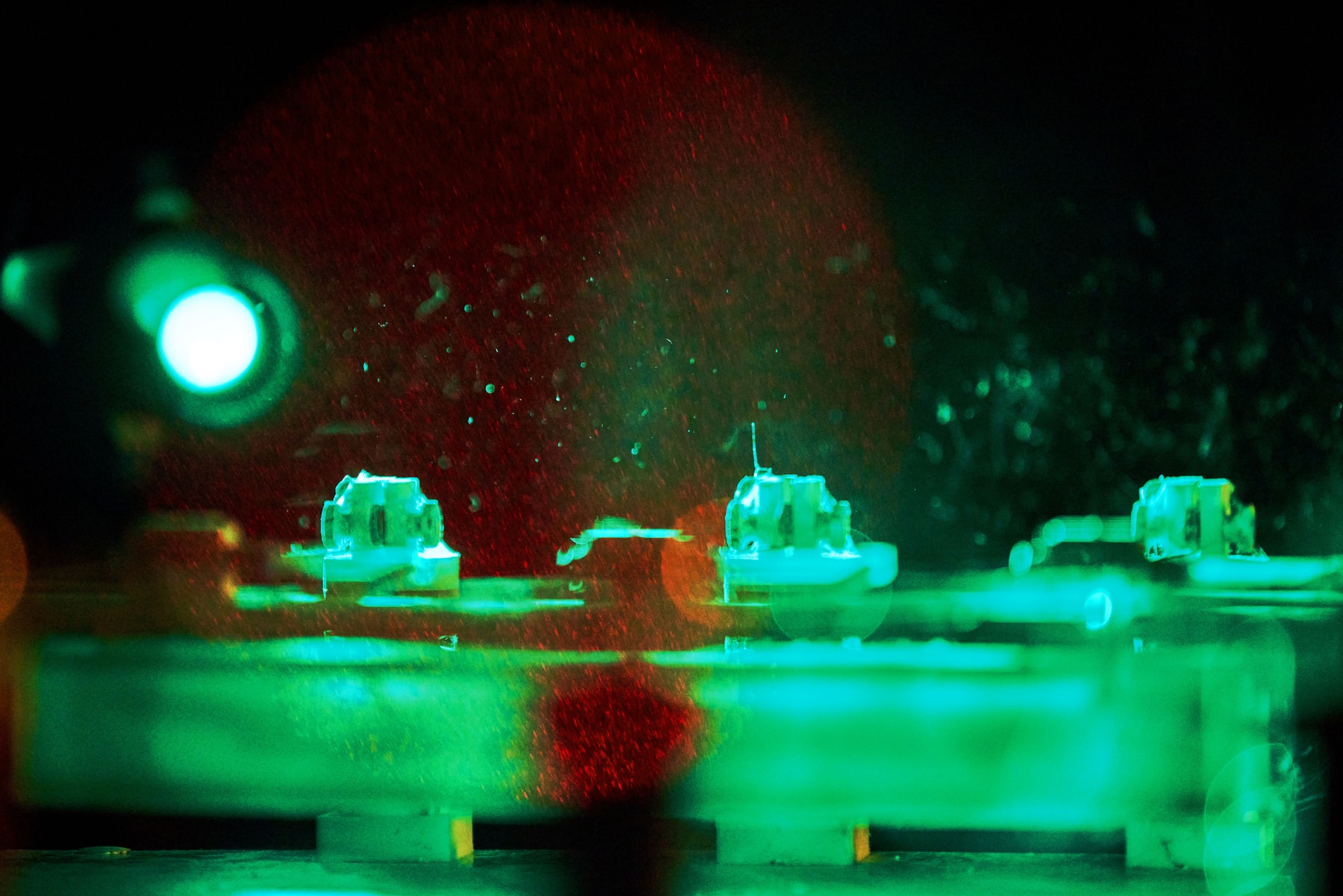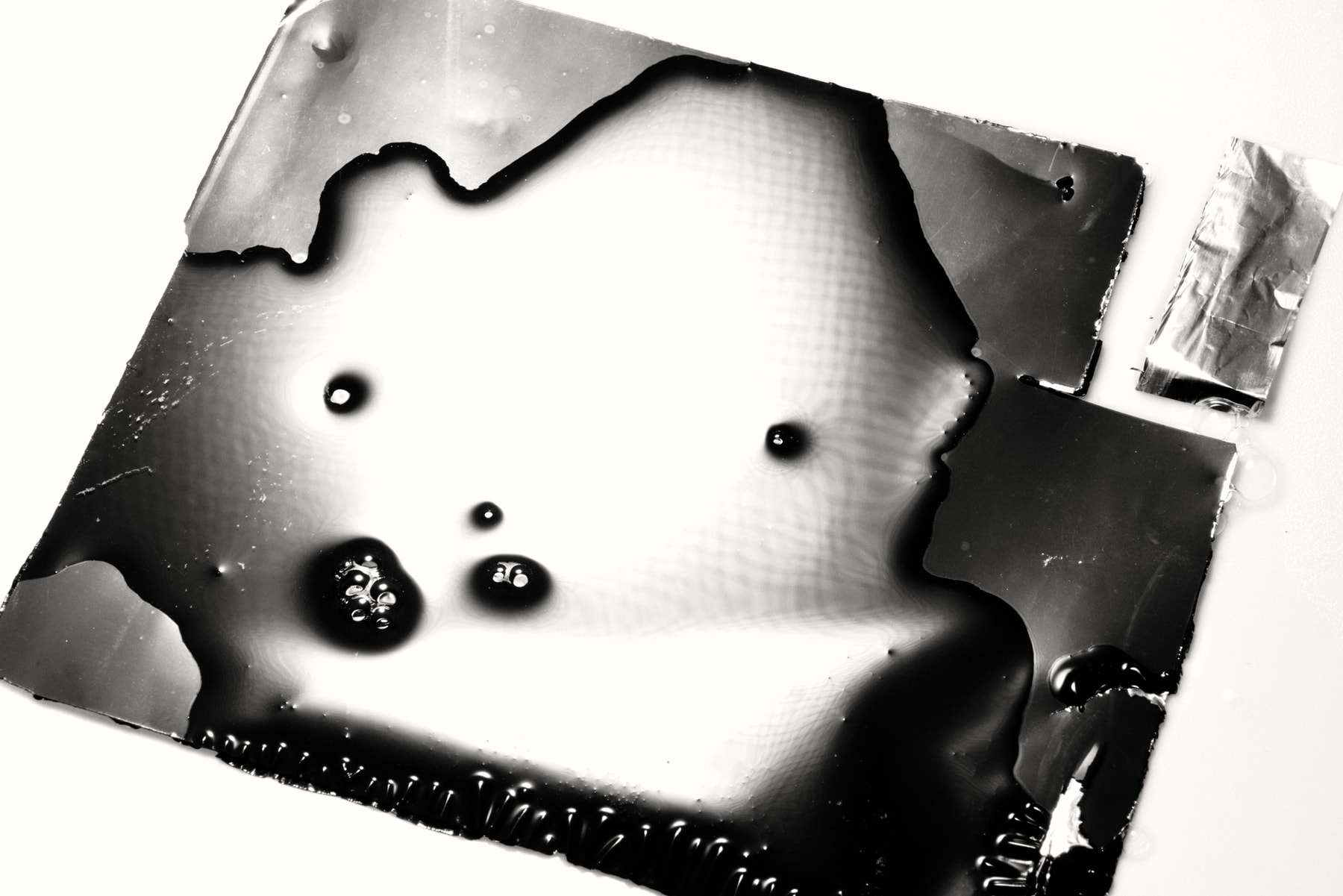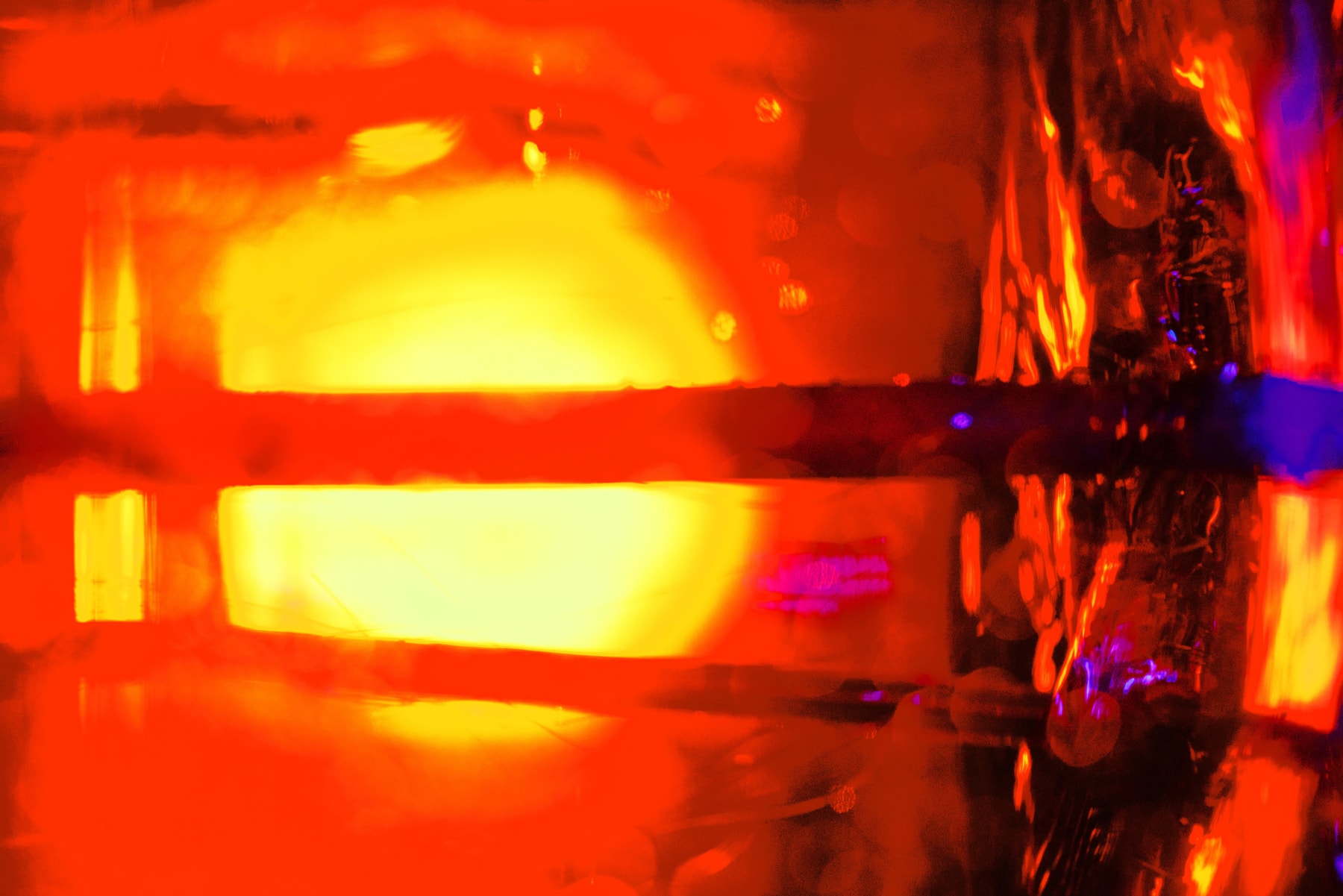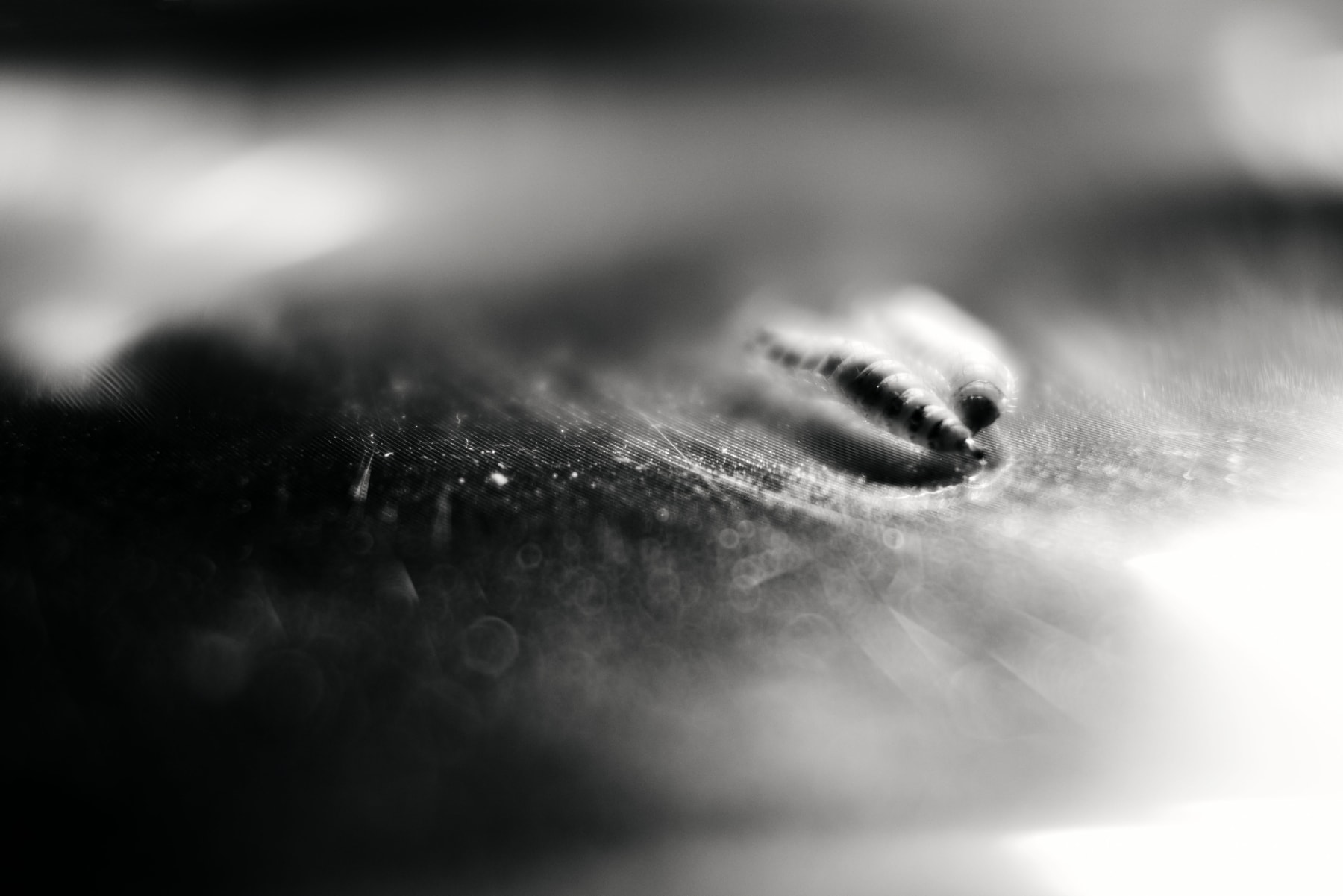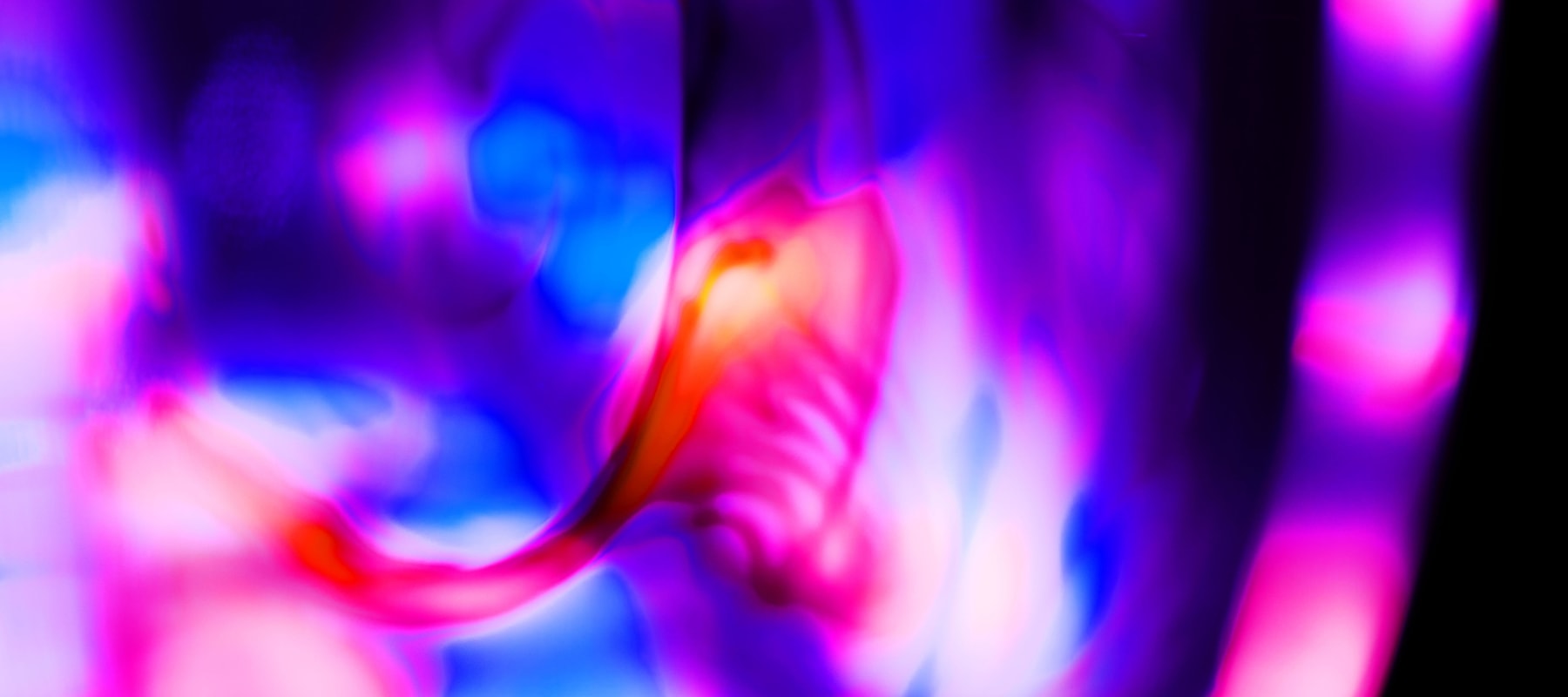

As an embodiment of curiosity and creativity paired with skills and technology, innovation celebrates the fruition of artistry and mastery. We often forget that the seamless collision of the two is explored in both the arts and the integral foundation of scientific inventions, where theoretical concepts and experiments parallel an artisan’s craftsmanship with the same level of dedication and evolving creative vision. When we photograph an invention and crystallize a scientific transformation into a still frame, we rediscover the often-overlooked liveliness that holds the magic to transcribe each photo from the documentation into an intimate portrait of energy and movement.
In this series, “Mastery Collides,” co-curated by Hypebeast and Hong Kong Science & Technology Parks Corporation (HKSTP), Wing Shya, an acclaimed Hong Kong photographer, invites us to explore the creative alchemy between the world of technology and artistry with a visual storytelling of the four featured technology companies, OKOsix, BSF Innovation (BSFI), GRST, and Centre for Novostics. Taking us behind the scenes to witness the innovative crafts, he manipulates lights, angles, and colors to evoke emotions and time in his compositions, capturing the creative evolution of each invention through close-up shots, repurposed lighting techniques, and time-lapse of organic compost in real-time. Unlike his usual assignments, which focused on capturing the portraits and sentimentality of his characters, there was no preset narrative for him to expand in his pictures. However, this lack of narrative inspired him to curate a sensual atmosphere using aesthetic configuration to animate these technical environments – transforming objects into subjective experiences.
With the opportunity to shoot raw materials directly in the laboratories of the four tech companies, Wing Shya molds each innovation’s essence into precise textures and shapes that are unique to each other. The fluidity of each piece reflects an undeniable relationship between precision and imagination whenever scientific mastery and artistic spontaneity are at play. When technology is interpreted as an artwork, we release any concepts and notions imposed by industrial traditions and fully immerse in a journey of boundless potential fueled by curiosity and intuition. In dialogue with Wing Shya and the artisans behind the four scientific innovations, we explore the versatility of creativity on a spectrum of perfected technicality and open abstractness.
What attracted you to explore shooting technological products for the very first time? How has this collaboration resonated with your creative approach?
Wing Shya:In my past works, I have always worked with people, drawing upon their or their characters’ feelings to bring out a specific mood we humans are all familiar with. But this project is like an open script, with most innovation foreign to the masses. I had to be spontaneous and explore the resources I had in front of me to create movement and change, no matter how big or small the subject was. There was this constant curiosity of wondering how much more I could discover if I took a deeper look at how different elements interact with each other in mixed environments. This sense of the more-to-be-discovered left a deep impression of fascination and admiration as to how innovation and technology can redefine reality as we know it at this speed of advancement.
Although this was my first time shooting technology in person, I did not see it as a separate category in my mind. Technology has proven to be an evolution of its own, and I view it more as a progressive experiment that mirrors how art changes over time. Because I didn’t know how the technology worked or how the lab operated, I had a sense of naivety—or we could say openness—to see things with no expectations or prior knowledge of how things “should” be. The other day, when I witnessed the molecular breakdown in the Centre for Novostics lab, it humbled me how advanced technology has evolved to the point where something as small as our blood work holds all the vital data of our genetics.
Can you give us a brief introduction to your products and your company’s vision?
Eddie Yu (OKOsix):We are on a mission to redefine the concept of “disposable” products, ending plastic waste for future generations. After 3 years of relentless research, testing and back and forth iterations—backed by our decade-long experience in sustainable materials—we have successfully invented the world’s first plastic-free, low carbon, biodegradable & compostable, multifunctional material. With this, we also invented world’s first fully biodegradable medical mask, gown and cosmetic nano-tech mask, and more. This was a massive breakthrough in setting a new global standard of “green plastic,” especially in a carbon footprint context. Using plant fibers and sugar derivatives to make our materials has reduced carbon emissions by 90% compared to the usual fossil fuel-dependent industry practices. So not only are our products truly waste-free during production, but it also ensures we leave no waste behind.
Sylvine Wong (BSFI):My company is committed to making a carbon-zero society a reality by maximizing the full potential of upcycling most kinds of food waste into high-quality fertilizer, bricks, and even pet food. Waste2Build is our innovative invention to upcycle food waste into a green building material through a kind of insect called black soldier fly. The research on black soldier flies began around 2016 before BSFI was officially launched, when Jeff, one of the co-founders, first started studying this organic matter. In October 2022, we launched BSFI when we met and exchanged our expertise and visions of reducing greenhouse gas in our works.
Frank Harley (GRST):At GRST, we’re reinventing how batteries are made — without harming the planet. Traditional lithium-ion batteries rely on toxic PFAS and harsh solvents, leaving behind pollution and waste. Our breakthrough WATMAR³ technology changes that. Our lithium-ion battery electrode coating technology makes batteries which are free of toxic PFAS “Forever Chemicals” and easily recyclable to high purity “black mass” materials through a low-cost water dissolving process.
Our non-toxic water-soluble electrode coating binder materials and process works across all types of battery chemistries and formats and matches cell performance and pricing. Our mission is to make our materials and technology the global industry standard for green electrode coating to enable a sustainable circular battery economy.
Prof. Dennis Lo (Centre for Novostics):At Centre for Novostics, we strive to advance molecular diagnostics — particularly in prenatal and cancer testing — through liquid biopsy technologies. The identification of fetal DNA in maternal plasma in 1997 opened new possibilities for noninvasive prenatal screening, which has since been adopted in over 90 countries and now supports millions of families annually. Our mission is to help position Hong Kong as a hub for molecular diagnostics, where scientific insights can evolve into tools that improve lives globally.
Innovation involves curiosity, experimentation, and exploring new perspectives, which is relevant in both technology and art. How is your invention an evolving art?
Prof. Dennis Lo (Centre of Novostics):Scientific breakthroughs often begin with a single observation — like the detection of fetal DNA in maternal blood — but their true potential unfolds through persistent questioning. Working together with a dedicated team, we spent years developing methods to interpret this discovery, test its limits, and translate it into clinical tools. The process mirrors an artist refining a technique: early prototypes may fail, but each iteration teaches you how to see the problem differently. Patents and papers are milestones, but what truly matters is how these tools evolve. For example, our team has since built on this foundational work to explore applications in cancer detection and other areas, reinterpreting the original “canvas” to address new challenges. Science, like art, is never static — it grows when we remain open to reimagining what’s possible.
Sylvine Wong (BSFI):We view technology as a means to enhance our lives, and like art, there is a continual desire to discover and prove the imaginable into reality. When people first learned of our concept of upcycling food waste to construct homes, the connection between these ideas seemed very irrelevant. This may be true until you begin to see them as interconnected resources that can benefit from each other’s supply and demand – the city’s need for construction materials and the pressing issue of food waste in our community.
So for this project, how did you incorporate the technological elements into your storytelling through photography?
Wing Shya: While shooting the BSFI insects, I was drawn to the whole circle of life concept, where destruction and creation are unavoidable and crucial elements of natural harmony. Using a Chinese calligraphy painting approach, I wanted to capture the transformation in each stage, drawing parallels between the composed breakdown of the insects and the formation changes of mist into a cloud or the ripple on a lake.
Some other materials, like the battery film in the GRST labs, it was melting so fast that there was little or no “concrete” subject left for me to narrate. So, I had to shift the focus to the actual movement, such as the dissolution or the change of form from solid to liquid, as the main storyline. Not everything has to have a story arch to be considered worth storytelling. We can allow things to be exactly what they appear to be and accept that as the full picture.
Inventing something that transforms how the industry and community understand and interact with your products naturally challenges the status quo of how things are done. What are some major difficulties the team has encountered in this process?
Eddie Yu (OKOsix):The greatest hurdle goes beyond simply inventing green plastic—it lies in developing a version that is both cost-effective and capable of delivering high performance. Achieving this would help dispel the misconception that green materials are prohibitively expensive or fall short in meeting hygiene and functionality standards.
Over the past three years, we have gained invaluable insights through trial and error, navigating industry skepticism about the limitations of traditional biodegradable plastics. This journey has motivated us to refine our products, establish our own rigorous standard to demonstrate the craftsmanship and precision behind our materials’ performance, and secure certifications from esteemed organizations such as SGS and Intertek. Our next exciting challenge is to honor the trust we’ve earned, continue sharing our knowledge with the community, and inspire clients and industry peers to embrace a collective vision of genuine sustainability.
Frank Harley (GRST):The technical challenges of developing a non-PFAS water-soluble electrode binder material system that matches industry performance and pricing were huge — it took us 8 years to develop. The commercial challenges to introduce changes to a capital-intensive industry with multi-year product testing times are also massive.
Fortunately, there is significant demand and growing interest from mobility and consumer electronics customers looking for better recyclability and products free from PFAS (a specific synthetic chemical). Now they are pulling us into their battery supply chains to collaborate with their existing suppliers giving us good momentum. Our team knows that we have a readily scalable solution to help heal our planet, and this motivates us to “Keep Up” and overcome the barriers to adoption.
How did it feel to see Wing Shya’s interpretation of your work?
Eddie Yu (OKOsix):Both surprised and deeply moved by the lighting effects Wing Shya masterfully used to accentuate the intricate details of our tools and creations. Having seen them countless times over the years, it’s easy for their uniqueness to fade into familiarity, almost rendering them ‘ordinary’ in our eyes. Yet, witnessing our materials brought to life with such vibrancy transformed our perspective, allowing us to recognize them as true works of art. This experience rekindled a profound sense of pride and passion within us, reminding us of the genuine beauty and remarkable potential behind what we create.
Sylvine Wong (BSFI):It reaffirms our belief that we can uncover beauty and surprises in the tiniest, often-overlooked details when we genuinely appreciate the natural world.
Frank Harley (GRST):Wing Shya’s perspective brings out the unseen beauty of what we are creating. Batteries are usually hidden inside devices — we see them as silent enablers of the electric future, but Wing’s vision shows how they can also be beautiful objects in their own right, making us even more proud of our work.
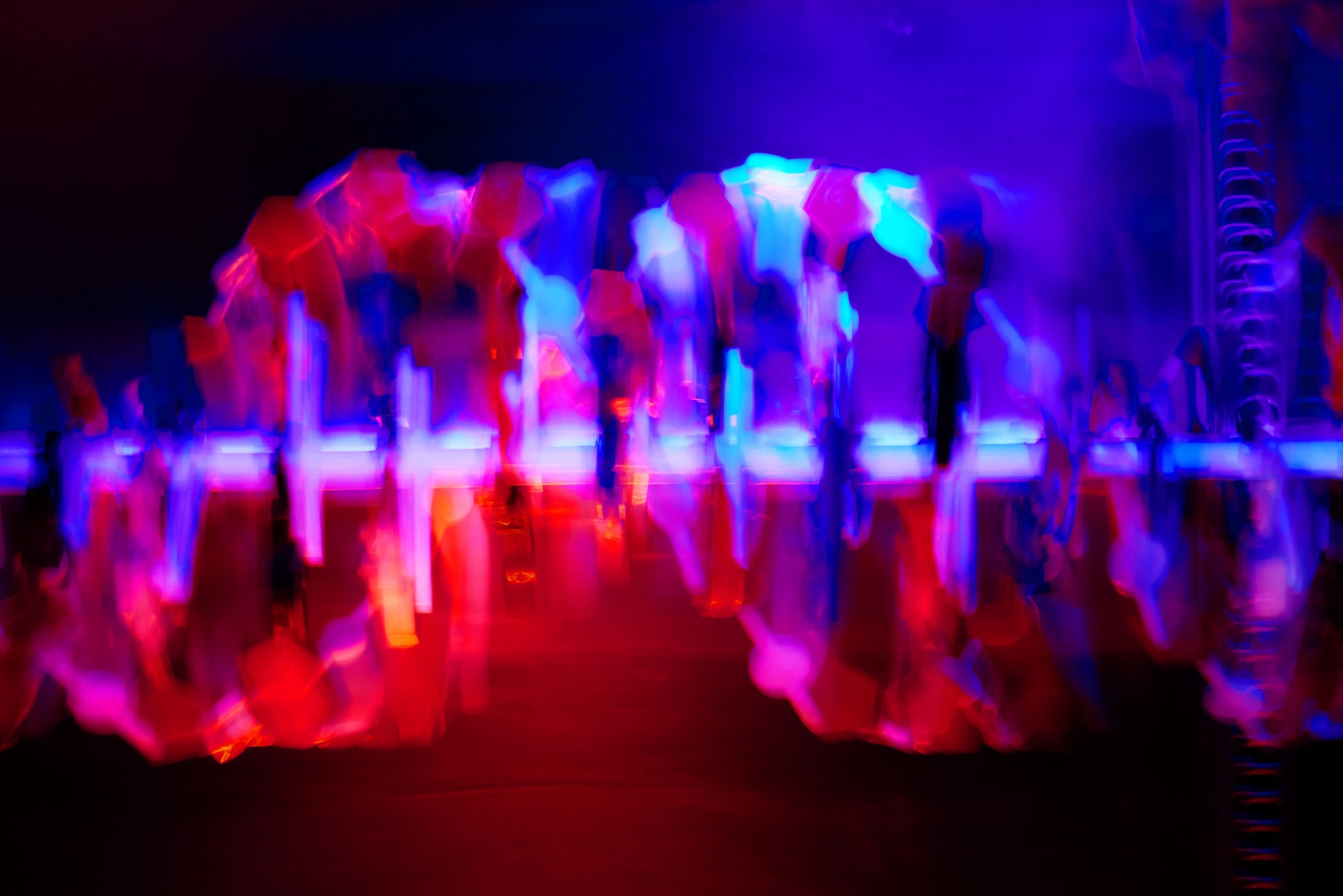
Through “Mastery Collides,” we witness how each piece shares a moving narrative of technical transformation, propelled by colors, brush strokes made by lights, and abstract design orchestrated by Wing Shya’s intuitional addition of humanness. In Hong Kong’s ever-changing Innovation and Technology landscape, these captured “fragments” of global-scale innovations show a glimpse of the limitless potential of a sustainable and brighter future when one starts understanding the sophistication of science through the alternative lens of artistry language. Drawing inspiration from transdisciplinary collaboration as this, true artisans from the field of science, arts, or both can be further realized and persist in the co-supporting dynamic of intellectual and visionary inventions, proving that creativity and innovation are the coexisting duo of the same masterpiece.
Stay tuned for the launch of the Mastery Collides photobook, an exclusive showcase of this collaboration — where technology meets expression and artistry captures the unseen beauty of invention. To browse the complete “Mastery Collides” collection, stay tuned to Hypeart.com for more details.




